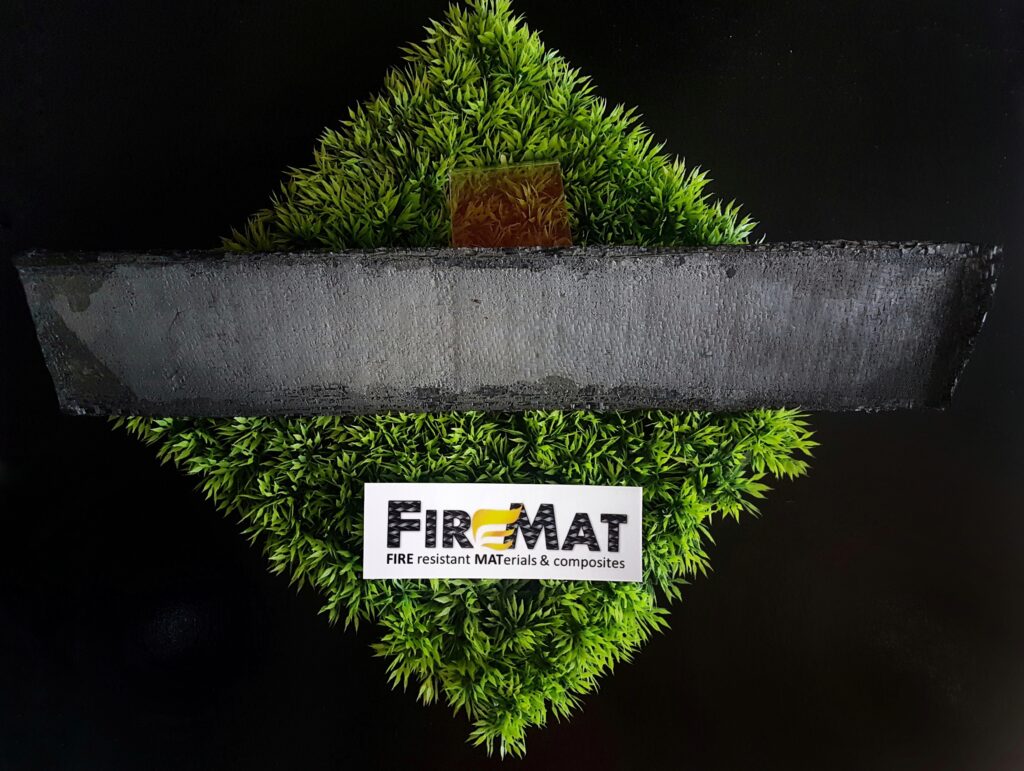This website uses cookies so that we can provide you with the best user experience possible. Cookie information is stored in your browser and performs functions such as recognising you when you return to our website and helping our team to understand which sections of the website you find most interesting and useful. More information in our Privacy Policy
Geopolymer composites for thermo-structural applications
Refractories, thermo-acoustic insulation and thermal barriers
Principal investigators: Valentina Medri, Elena Landi, Annalisa Natali Murri
Involved personnel: Elettra Papa, Cesare Melandri
The activity of CNR-ISSMC is dedicated to the development of particle geopolymeric composites or with fibers, and cores in sandwich panels for thermo-structural applications such as:
- self-supporting cavities;
- thermal and acoustic insulators;
- thermal barriers and fire cutters;
- high temperature and damping coatings,
- foams and refractory linings;
- molds and cores for the foundry.
Geopolymers are synthetic inorganic polymers based on aluminosilicate or phosphate based chemically bound at T <300 ° C. They have a high tolerance to high temperatures because they are incombustible, do not develop gases or fumes, are not toxic and do not “explode”, since in contrast to traditional hydraulic cements they do not contain water in the structure. It is important to emphasize that thermo-structural geopolymeric materials are always composite: the geopolymer resin acts as a glue for the charges that functionalize or reinforce the material. In particular, for geopolymer-based composite materials, three types of products can be indicated:
- a composite geopolymer matrix with a particulate filler, such as sand, carbon, metal oxides or carbides to increase refractory, lightweight aggregates to increase lightness, synthetic or natural fibers, even wastes, etc.;
- a porous composite geopolymer matrix, in which pores are generated by foaming techniques to increase lightness and insulating power;
- a composite material that involves the impregnation of long fibers and tissues or the drowning of an internal reinforcement into a geopolymeric mix, with techniques similar to those used for organic resins and their related composite materials.
This topic concerns the POR FESR EEE-CFCC and FIREMAT projects, the Ritmare flagship project, the MISE LAMPO project and EIT Raw Materials FENICE.
Tools and Processes
The geopolymerization process is a reaction between an aluminosilicate powder and an aqueous solution of alkaline hydroxides or silicates which, based on the cation (commonly Na +, K +, but also Li +, Cs +), affects the final mechanical and thermal properties. The phosphate-based geopolymer materials are the products of the acid-base reaction of two- and three-dimensional metal oxides with acid phosphates in aqueous solution. The synthesis temperatures are below 100 ° C for the “alkaline” and lower than 300 ° C for the phosphate. Mechanical mixing is required to complete the reaction. CNR-ISSMC is equipped with shear mixer (Planetary Centrifugal Mixer “THINKY MIXER” ARE-500).
Hand layup and vacuum bagging or vacuum infiltration processes are used for fiber-reinforced composites. These technologies allow the production of ceramic-based materials in the same way as some plastic materials, removing heavy equipment and high temperatures from industrial ceramic plants. The geopolymer items, in fact, can be produced by molding and without the aid of further finishes. CNR-ISSMC has formulated inorganic resins that can be adapted to technologies, such as the vacuum bagging and autoclave, commonly used for polymer-based fiber-reinforced products (FRP), with consequent simplification of the production process and relative cost reduction. The activity of CNR-ISSMC was carried out as part of an industrial research contract through which Aeronautical Service srl activated a new production line and drew up validation protocols to market the products. The current TRL is 8.
Main collaborations
- Tecnologie dei Materiali Faenza (ENEA-TEMAF)
- CertiMaC Soc. Cons. a Resp. Limitata (CERTIMAC)
- Centro Interdipartimentale per la Ricerca Industriale di Meccanica Avanzata e Materiali (CIRI-MAM)
- Aeronautical Service Srl
Projects
Publications and patents
- Medri, A. Natali Murri, E. Papa, C.Mingazzini, M. Scafè, E.Landi, Ultra-High-Temperature Ceramic-Doped Inorganic Polymers for Thermo-Structural Fiber-Reinforced Composites, Materials 16, 2023, 6649.
- Papa, E., Medri, V., Natali Murri, A., Laghi, L., De Aloysio, G., Bandini, S., Landi, E., Characterization of alkali bonded expanded perlite, Construction and Building Materials 191 (2018) 1139–1147
- V. Medri, E. Papa, M. Mazzocchi, L. Laghi, M. Morganti, J. Francisconi, E. Landi, Production and characterization of lightweight vermiculite/geopolymer-based panels, Materials and Design 85 (2015) 266-274.
- Medri V., Martelli S., Landi E., Esposito L., Alkali inorganic binders for the production of fibre based foams, Ceramics International 40 (2014) 10131–10136
- Medri V., Fabbri S., Ruffini A., Dedecek J., Vaccari A., SiC-based refractory paints prepared with alkali aluminosilicate binders. Journal of the European Ceramic Society 31 (2011) 2155–2165.

